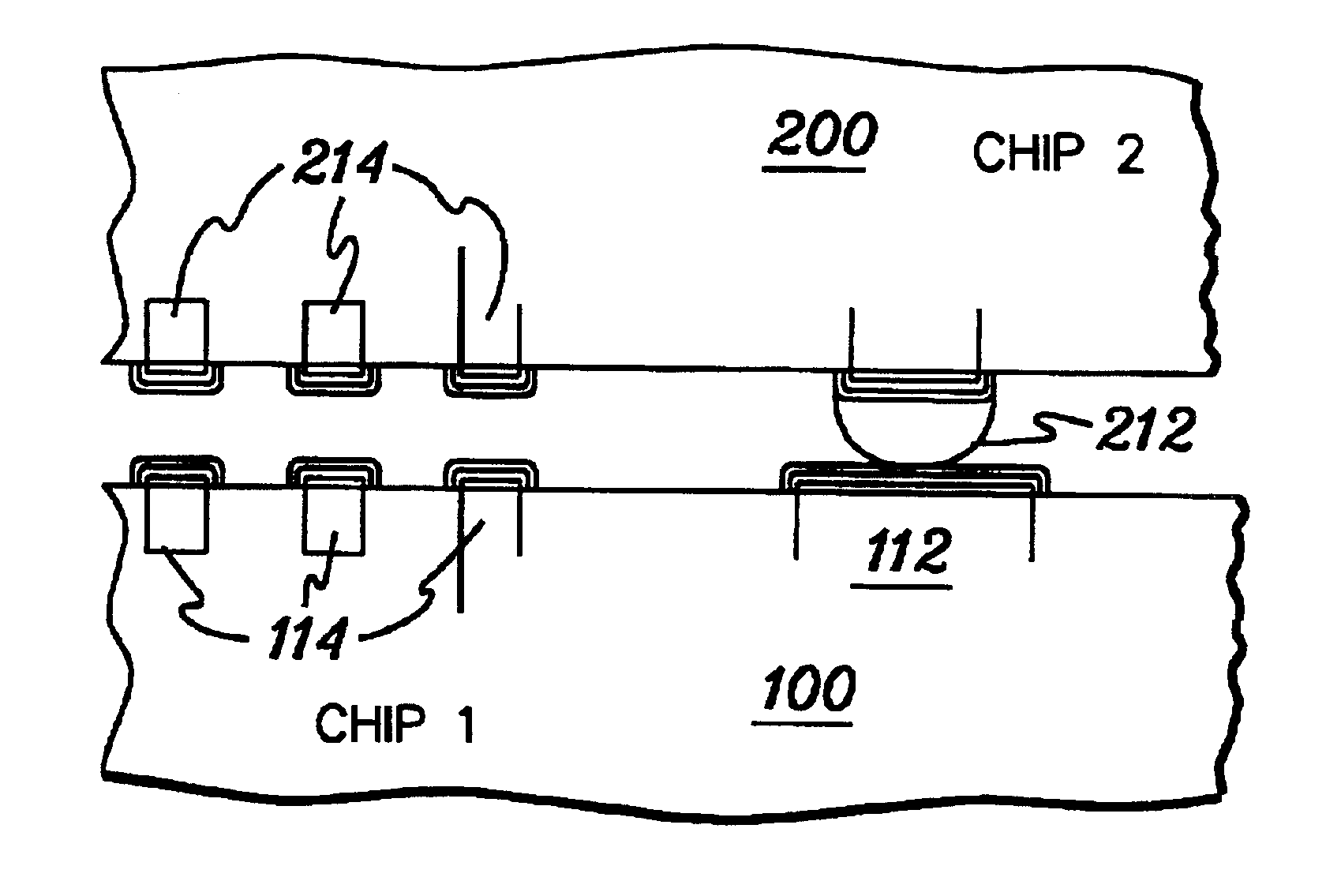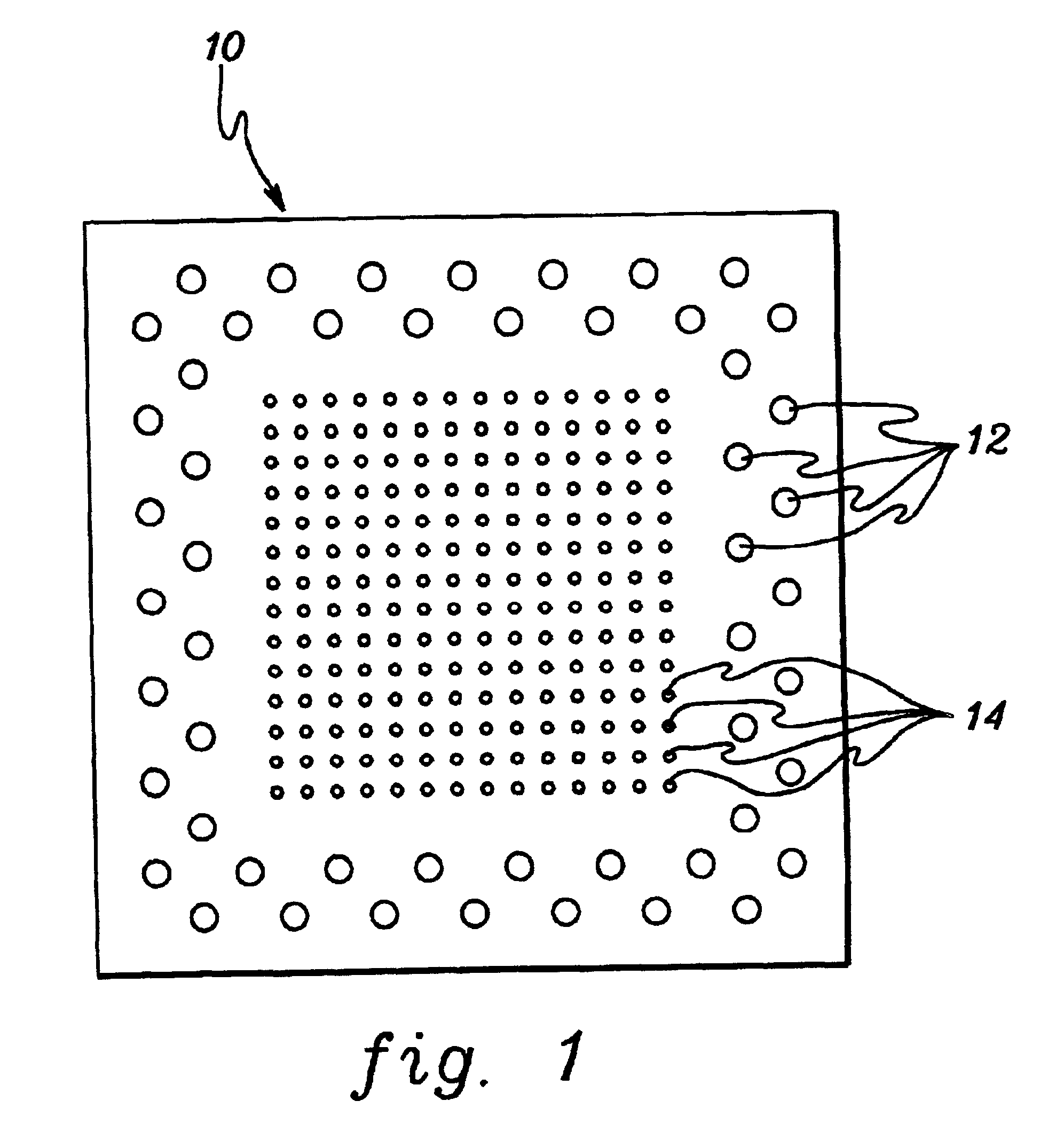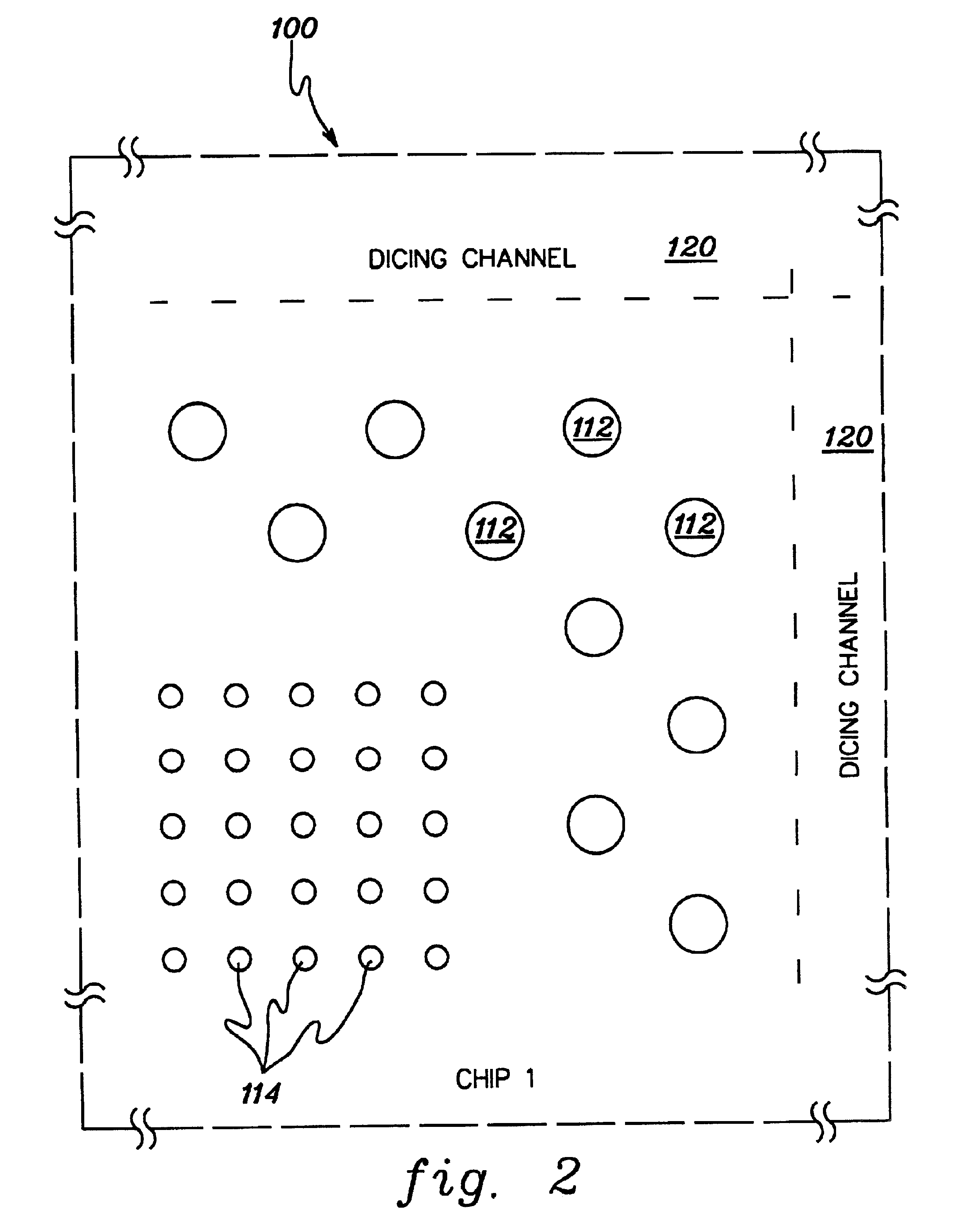Multi-chip stack and method of fabrication utilizing self-aligning electrical contact array
a technology of electrical contact array and multi-chip stack, which is applied in the direction of electrical apparatus, semiconductor devices, semiconductor/solid-state device details, etc., can solve the problems of wrong electrical connection misinterconnection between the two chips, and non-functional multi-chip stack
- Summary
- Abstract
- Description
- Claims
- Application Information
AI Technical Summary
Benefits of technology
Problems solved by technology
Method used
Image
Examples
Embodiment Construction
Generally stated, the present invention comprises a self-aligning electrical interconnection approach for connecting, for example, a first integrated circuit chip and a second integrated circuit chip in a dual-chip stack configuration. This self-aligning interconnection approach employs two or more interconnection arrays, with one array comprising a rough aligned contact array, and a second array comprising a high bandwidth contact array, wherein the rough aligned contact array comprises larger contacts than the contacts of the high bandwidth contact array. As described further below, the rough aligned contact array is fabricated so that the contacts have a lower melting point than the contacts of the high bandwidth contact array. Therefore, by mounting, for example, a first integrated circuit chip on top of a second integrated circuit chip and heating to melt the contacts of the rough aligned contact array, the two chips will rotate to align their respective contacts of the high ba...
PUM
 Login to View More
Login to View More Abstract
Description
Claims
Application Information
 Login to View More
Login to View More - R&D
- Intellectual Property
- Life Sciences
- Materials
- Tech Scout
- Unparalleled Data Quality
- Higher Quality Content
- 60% Fewer Hallucinations
Browse by: Latest US Patents, China's latest patents, Technical Efficacy Thesaurus, Application Domain, Technology Topic, Popular Technical Reports.
© 2025 PatSnap. All rights reserved.Legal|Privacy policy|Modern Slavery Act Transparency Statement|Sitemap|About US| Contact US: help@patsnap.com



